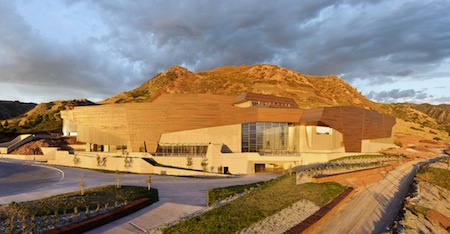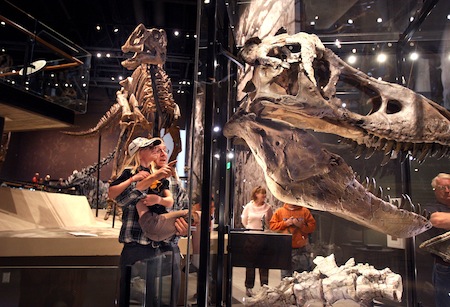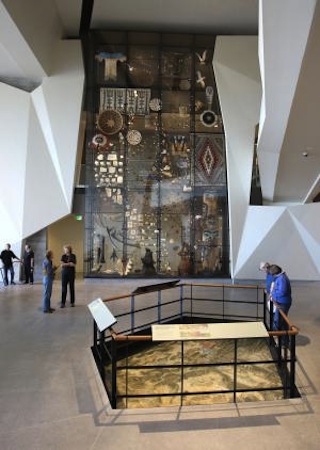It’s not just the dinosaur bones that are attracting visitors to the newly reopened Natural History Museum of Utah. Visitors are also interested in the bones of the building itself. Located in Salt Lake City at the foot of the Wasatch Mountains, the museum opened in its new, green building this past November.
Museum staff are now offering daily architectural tours of the structure, which was designed to achieve LEED Gold certification, one of only 18 buildings in Salt Lake City to be awarded the distinction. The building’s green design elements include the use of recycled materials, local resources, photovoltaic energy, radiant cooling and an extensive storm water catchment and management system.

The building’s exterior was inspired by the landscape of Utah and blends seamlessly into its surroundings with the angles of the roof rising and falling with the slope of the mountains in the background. Copper panels make up the skin of the building and are situated in horizontal bands to replicate geological stratification. Todd Schliemann of Ennead Architects designed the new building, which cost $103 million.

Inside, the building is divided by a 60-foot-high central public space called “The Canyon.” One wing of the new museum contains research laboratories, conservation labs, collection storage and administration; the other wing houses public spaces with exhibitions and galleries in which to present, interpret and study the museum’s collection of artifacts and exhibits. The museum is an active research institution, located at the University of Utah, that features more than 1.2 million different specimens and objects.
“We feel Utah residents will be very proud of our new home, which is the product of the work of literally every community in the state and experts from around the world,” Sarah George, executive director of The Natural History Museum of Utah, said in a statement. “I believe we now offer one of the nation’s great new cultural buildings in which architecture and exhibition content serve and advance science and education while respecting their natural surroundings. We look forward to many years of telling the exciting and important stories of the natural world.”
Before the green renovation, the museum had been welcoming visitors for more than four decades. An energy efficient retrofit that took place in June was projected to save on the building’s yearly energy costs by more than $22,000.

In the first two months after reopening the museum saw 60,000 visitors pass through the doors. Guided architectural tours are offered four times every weekday and twice on Sunday afternoons. The cost of the Architecture Tour is included in the admission to the museum, which is $9 for adults, but visitors can also take advantage of free areas of the new building including The Canyon, which offers expansive views of the valley; the Museum Store; and the Museum Café, which offers indoor and outdoor seating and access to the University of Utah’s Wi-Fi network.